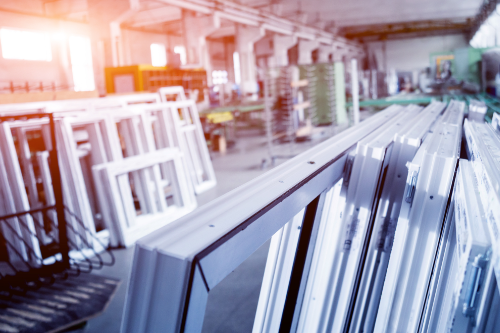
EAM (Enterprise Asset Management)
For maximum profit, manufacturers must maintain equipment and assets to:
- Maximize asset utilization and production yield, leading to increased efficiency.
- Extend equipment life, reducing the cost and disruption of replacements.
- Support OEE targets by decreasing machine downtime while lowering maintenance costs
- Streamline indirect procurement and maintain the right levels of spare parts inventory
Key Challenges
Diversity of assets - managing and tracking the reliability of various equipment and assets on the shop floor.
Schedule sanity - proactive planning of maintenance activities that balance equipment availability needs against technician time constraints
Hidden costs - addressing maintenance, repair, and capital investment needs as physical assets and plants age while dealing with numerous vendors.
Quality - ensuring high performance and reliability of equipment to maintain product and service quality and customer satisfaction.
Capabilities
- Projects
- Maintenance
- Inventory
- Purchasing
EAM (Enterprise Asset Management)
Manufacturers face the challenges of improving equipment agility and maximizing the lifetime value of assets. It is difficult to track and manage the reliability of shop floor machinery, physical plants, material handling equipment and other assets. The costs of spare and replacement parts continue to rise as equipment becomes increasingly more sophisticated.
As physical assets and plants age they require ongoing maintenance, repair and capital investment. These costs are not always visible, yet they can account for half of a manufacturer’s operating costs. The performance and reliability of equipment directly impacts the effectiveness of a manufacturer’s products and services in terms of quality and customer satisfaction.
EAM (Enterprise Asset Management) is crucial for managing asset life cycles and projects that are required to support production efficiency. EAM also helps extend the useful life of equipment, improves return on investment of assets, often defers new equipment acquisition and contributes to replacement assets performing better than their predecessors.
EAM (Enterprise Asset Management) helps manufacturers manage the full asset lifecycle including equipment, tools and rotable inventory maintenance, MRO procurement and capital asset costing.
Maximize asset utilization and production yield
Increase life of equipment
Reduce maintenance costs
Decrease machine downtime and lost production
Right-size spare parts inventory
Improve project return on investment
Avoid emergency repairs and overtime cost
Streamline indirect material procurement processes
Better manage customer-funded projects
Improve sustainability by reducing energy and material waste, and extending equipment life
SOLUTION
EAM is embedded in the core solution, helping companies effectively operate plants by keeping equipment running at peak efficiency while controlling costs. EAM manages the full “acquire-to-retire” process via capital projects and the complete lifecycle management of physical assets. It helps manufacturers maintain plants, provides visibility into spare parts inventory and purchasing and fully tracks customer-funded and expense projects.
Manage and track capital projects to bring assets online and maintain those assets through their operational life and replacement
Administer and govern customer-funded and expense projects
Manage plant and tool maintenance, providing visibility into spare parts inventory across multiple facilities
Analyze plant health and identify opportunities for improvement with real-time key performance indicators
Conduct production-driven maintenance based on actual asset usage for peak optimization of preventive maintenance downtime
Schedule preventive and condition-based maintenance based on elapsed time, usage or monitor readings, avoiding unplanned downtime and providing better control of maintenance costs
Comply with supplier-recommended maintenance schedules
Maintain regulatory certification for maintenance activities
Use detailed parts, labor and contractor services cost analysis to make informed repair or replace decisions based on actual maintenance spend versus replacement costs
Utilize drag-and-drop Gantt chart scheduling to efficiently assign resources and dates to tasks
Proactively kit parts and visualize demand with Stores Requisitions management
Unsolicited positive user feedback?
A two week reduction of downtime and unsolicited positive user feedback are just some of the ways a flexible packaging manufacturer benefited from EAM.



